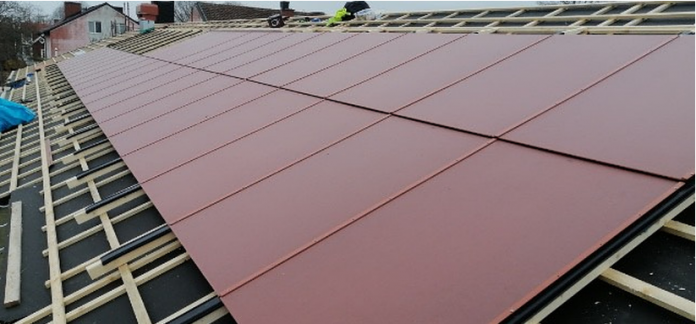Italian solar module manufacturer Solarday has unveiled a glass-glass building-integrated PV panel with a power conversion efficiency of up to 17.98%.
“The module is available in different colors, from brick red to shades of green, gold and grey, and is currently being manufactured at our 200 MW factory in Nozze di Vestone, in the northern Italian province of Brescia,” a company’s spokesperson told pv magazine.
The new monocrystalline PERC module is available in three versions with nominal power of 290, 300 and 350 W, respectively. The largest product has a 72-cell design, measures 979 x 1,002 x 40 mm, and weighs 22 kg. The other two products have a 60-cell design, smaller dimensions, and weigh 20 and 19 kg, respectively.
All modules can operate with a system voltage of 1,500 V and have a power temperature coefficient of -0.39% per degree Celsius. The open-circuit voltage ranges from 39.96 and 47.95 V and the short-circuit current is between 9.40 and 9.46 A. It comes with a 25-year performance guarantee and a 20-year product warranty. The thickness of the frontal glass is 3.2 mm and the operating temperatures range from – 40 to 85 degrees Celsius.
“We are currently using from M2 to M10 solar cells with a different number of busbars,” the spokesperson went on to say. The company initially aimed at directly coloring the solar cells, but it then opted for coloring the glass. “This was cheaper by far and, with this solution, customers can choose between different RAL colors for the desired integration.”
Compared to conventional modules for rooftop installations, the new product offered by Solarday can be up to 40% more expensive. “But BIPV needs to be understood as shifting the cost of traditional building materials for a customized PV curtain wall, or colored PV modules,” the spokesperson added. “This is not expensive if we consider BIPV allows saving money on classic construction materials, adding the benefit of generating electricity with premium aesthetics.”
The company’s main customers are PV product distributors that want to have Made in EU products or colored modules. “Colored panels are more and more demanded in Scandinavian countries, Germany and Switzerland,” he stated. “There are a lot of local regulations coming about integrating PV on historical neighborhoods and old districts.”






